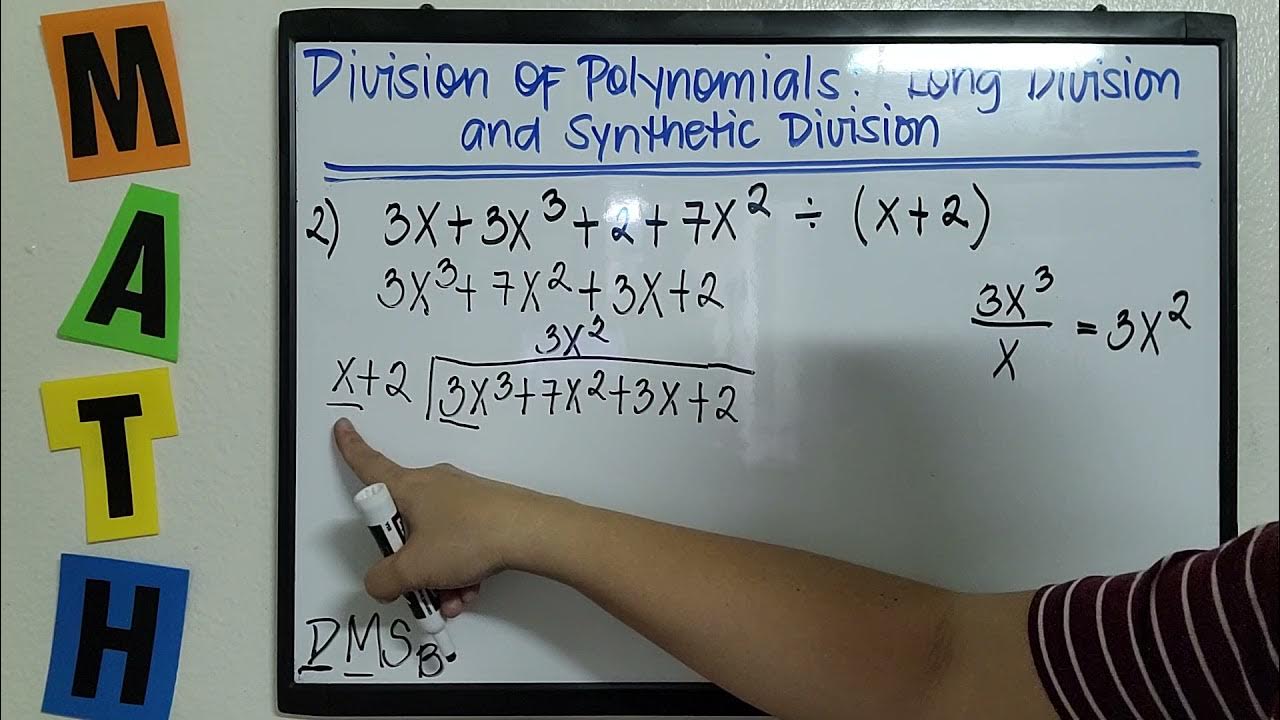Factoring Cubic Polynomials- Algebra 2 & Precalculus
Summary
TLDRThis educational video tutorial focuses on factoring cubic polynomials, offering a step-by-step guide. It introduces the method of factoring by grouping, demonstrating how to identify and use the greatest common factor (GCF) to simplify polynomials. The video walks through multiple examples, including the use of synthetic division to find rational zeros and further factorize the expressions. It emphasizes the importance of checking for possible rational zeros and correctly applying synthetic division to achieve the final factored form of cubic polynomials.
Takeaways
- 🔢 Factoring cubic polynomials involves breaking down a cubic expression into simpler factors.
- 🔑 Factoring by grouping is a method where you group terms and factor out the greatest common factor (GCF) from each group.
- 🔄 The script demonstrates how to factor by grouping with the example of x^3 + 2x^2 - 5x - 10, showing that the first two and last two coefficients have the same ratio, indicating the possibility of factoring by grouping.
- 📉 The video explains that after factoring out the GCF, you can sometimes further factor the remaining expression using techniques like the difference of squares.
- 🔍 When factoring by grouping is not possible, the script suggests finding possible rational zeros by considering the factors of the constant and leading coefficient.
- 📚 Synthetic division is introduced as a method to reduce a polynomial once a zero is found, as demonstrated with the example of x^3 - 4x^2 + x + 6.
- 🔄 The script shows how to use synthetic division to find the remaining factors after reducing a polynomial by a known zero.
- 🔍 The process of finding rational zeros involves testing potential zeros by substituting them into the polynomial to see if the result is zero.
- 📝 The video emphasizes the importance of checking all potential zeros and using synthetic division to confirm the factorization.
- 📌 The script concludes by reinforcing the steps to factor cubic polynomials: first, try factoring by grouping, and if that fails, use synthetic division to find zeros and factor further.
Q & A
What is the main focus of the video?
-The video focuses on teaching how to factor cubic polynomials.
What is the first method introduced in the video for factoring cubic polynomials?
-The first method introduced is factoring by grouping.
How does the video suggest determining if factoring by grouping can be used?
-The video suggests checking if the first two coefficients have the same ratio as the last two coefficients.
What is the greatest common factor (GCF) taken out in the example of x^3 + 2x^2 - 5x - 10?
-In the example, the GCF taken out is x^2 for the first two terms and -5 for the last two terms.
What is the result of factoring the polynomial x^3 + 2x^2 - 5x - 10 using the method shown in the video?
-The result is (x + 2)(x^2 - 5).
What is synthetic division and when is it used in the video?
-Synthetic division is a method used to find the remaining factors of a polynomial after one factor has been found. It is used in the video when the method of factoring by grouping is not applicable.
How does the video demonstrate finding the possible rational zeros of a function?
-The video demonstrates finding possible rational zeros by considering the factors of the constant term and the leading coefficient, then testing these values to see which one makes the polynomial equal to zero.
What is the polynomial used to illustrate synthetic division in the video?
-The polynomial used is x^3 - 4x^2 + 6x - 12.
What is the significance of finding a zero using synthetic division?
-Finding a zero using synthetic division is significant because it allows you to reduce the polynomial to a quadratic, which is easier to factor.
How does the video suggest verifying the factors found using synthetic division?
-The video suggests verifying the factors by substituting the zero back into the original polynomial to ensure it equals zero.
What is the final factored form of the polynomial x^3 - 4x^2 + 6x - 12 as presented in the video?
-The final factored form is (x - 2)(x^2 - 2x - 3).
Outlines

هذا القسم متوفر فقط للمشتركين. يرجى الترقية للوصول إلى هذه الميزة.
قم بالترقية الآنMindmap

هذا القسم متوفر فقط للمشتركين. يرجى الترقية للوصول إلى هذه الميزة.
قم بالترقية الآنKeywords

هذا القسم متوفر فقط للمشتركين. يرجى الترقية للوصول إلى هذه الميزة.
قم بالترقية الآنHighlights

هذا القسم متوفر فقط للمشتركين. يرجى الترقية للوصول إلى هذه الميزة.
قم بالترقية الآنTranscripts

هذا القسم متوفر فقط للمشتركين. يرجى الترقية للوصول إلى هذه الميزة.
قم بالترقية الآنتصفح المزيد من مقاطع الفيديو ذات الصلة

How To Factor Polynomials The Easy Way!

Matematika SMP - Pemfaktoran Aljabar (1) - Rumus Dasar, Rumus Jumlah dan Selisih

Natural Cubic Spline Interpolation Example | Numerical Methods

Solving Polynomial Equations By Factoring and Using Synthetic Division

Lec 37 - Zeroes of Polynomial Functions

TAGALOG: Division of Polynomials - Long Division and Synthetic Division #TeacherA
5.0 / 5 (0 votes)
